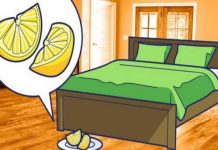Sofas, loveseats, sofa beds, Davenports – whatever your family calls them, they’re a great investment. To get the most out of your sitting, follow these five steps They’ll take the “pain” out of your sofa.
Check the frame.
A sturdy frame means the sofa will last longer. Soft woods such as pine are cheaper, but will warp and sway after five years. More expensive hardwoods (such as kiln-dried oak, ash and beech) are more durable. Avoid particle board, plastic and metal frames because they can warp and break. Legs should be glued, as should parts of the frame, or secured with screws or dowels (nails).
Tip: To test the strength of the frame, lift the front corner or one leg of the sofa off the ground. When it is lifted 15 cm, lift the other front leg as well. If it still touches the floor, then the frame is too far from the ground and is weak.
Ask about mortise and tenon construction.
Frames attached by any method – dowels, double dowels, wooden corner blocks (corner blocks can be marked for glue and screw connections) or metal screws and brackets – are strong. It can also be reinforced with staples or nails, but never buy a sofa that is fixed only with staples, nails or glue.
Tip : Ask your sales representative for the manufacturer’s written information on frame connections.
Testing the springs
Most sofas have “sinuous springs” (also known as bellows springs), which are pre-assembled corrugated tubular metal wires. They provide good support, but if the metal is not heavy enough, they can compress the frame and sag over time. High-end sofas are usually equipped with “eight-way hand-pull springs”. They are comfortable but expensive, and some experts say they are indistinguishable from serpentine springs. The springs are felt through the upholstery and must be tightly fitted. A sofa without springs, only mesh or netting, is uncomfortable and fragile.
Tip: Try to sit firmly in a corner or on the outer edge of the sofa you are considering buying. A creaking sound indicates that the springs are not in the correct position or are hitting the frame.
This picture is not available
Feel the padding.
Polyurethane foam is a low-cost, easy-to-clean cushion padding material. However, the durable high-density types feel hard, while the softer, lower-density types deteriorate faster with continued use. High resilience (HR) foam is slightly more expensive, but is more comfortable and lasts longer. Polyester is also cheaper, but it flattens out quickly. Goose and duck feather stuffing is comfortable, but can harden. The most important thing is the mix of goose down (the soft undercoat of the bird) and feathers. This combination is very rich and expensive (about twice the price of foam) and costly to maintain, including the need to add down to the pads frequently. Down tapes are less expensive, but they flatten out quickly.
Tip : There are two great options that are comfortable and reasonably priced: HR foam has a layer of down, while traditional foam is encased in a polyester lining.
Look for tough textiles
Everyday sofas need tough fabrics. Cotton and linen are the best (but be aware that loosely woven fabrics can snag). Synthetic microfiber is a good choice because it can resemble most fabrics and is stain resistant. Cotton and linen are treated to resist stains, but are still less easy to care for and less durable, says Catherine Hardy, director of textiles, paper and plastics at the Harvest Institute. Blends of natural and synthetic fibers tend to wrinkle within a year. Wool and leather are beautiful and durable, but expensive. Silks are smooth but fragile. Fabrics with woven patterns tend to be more durable than printed patterns.
TIP : Ask your shopper for a fabric that is larger than the usual sample. Place it where the sofa can accommodate it. Observe it in natural and artificial light and see how much you still like it after a few days.










